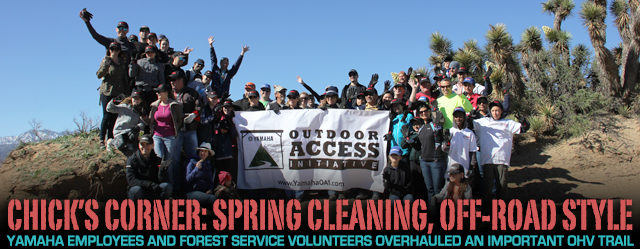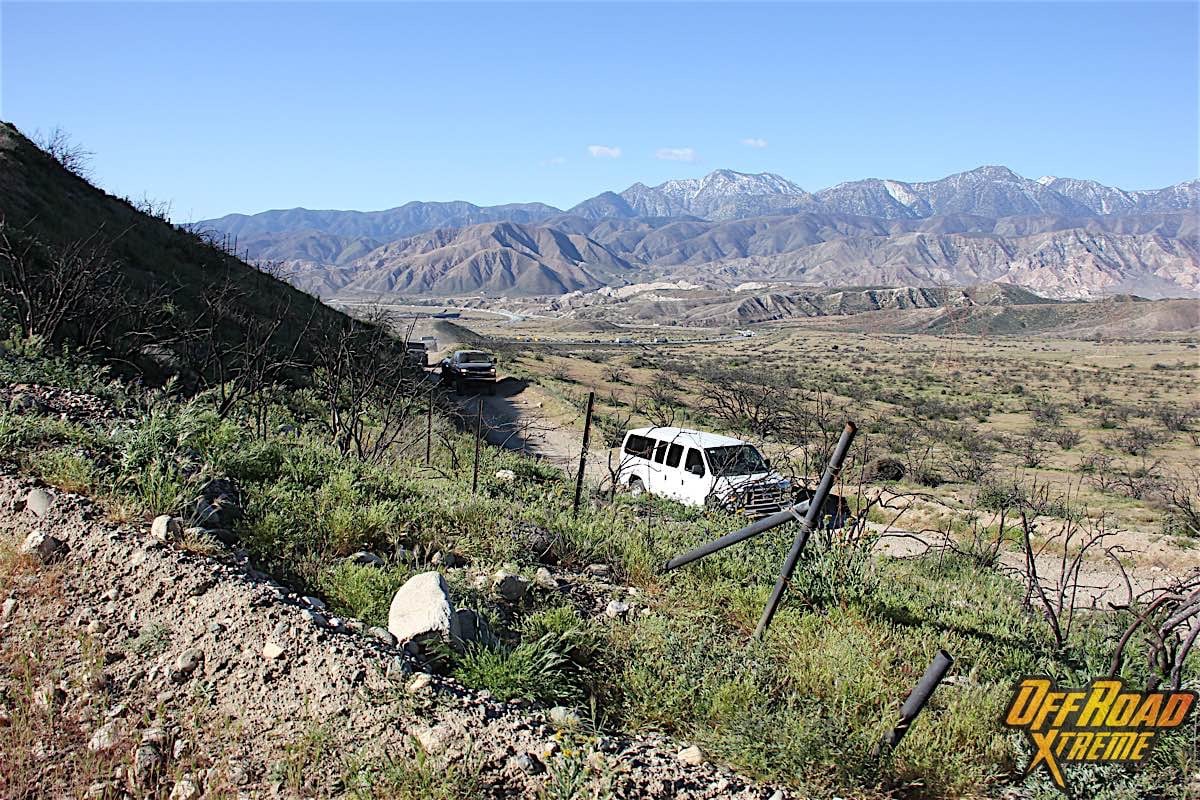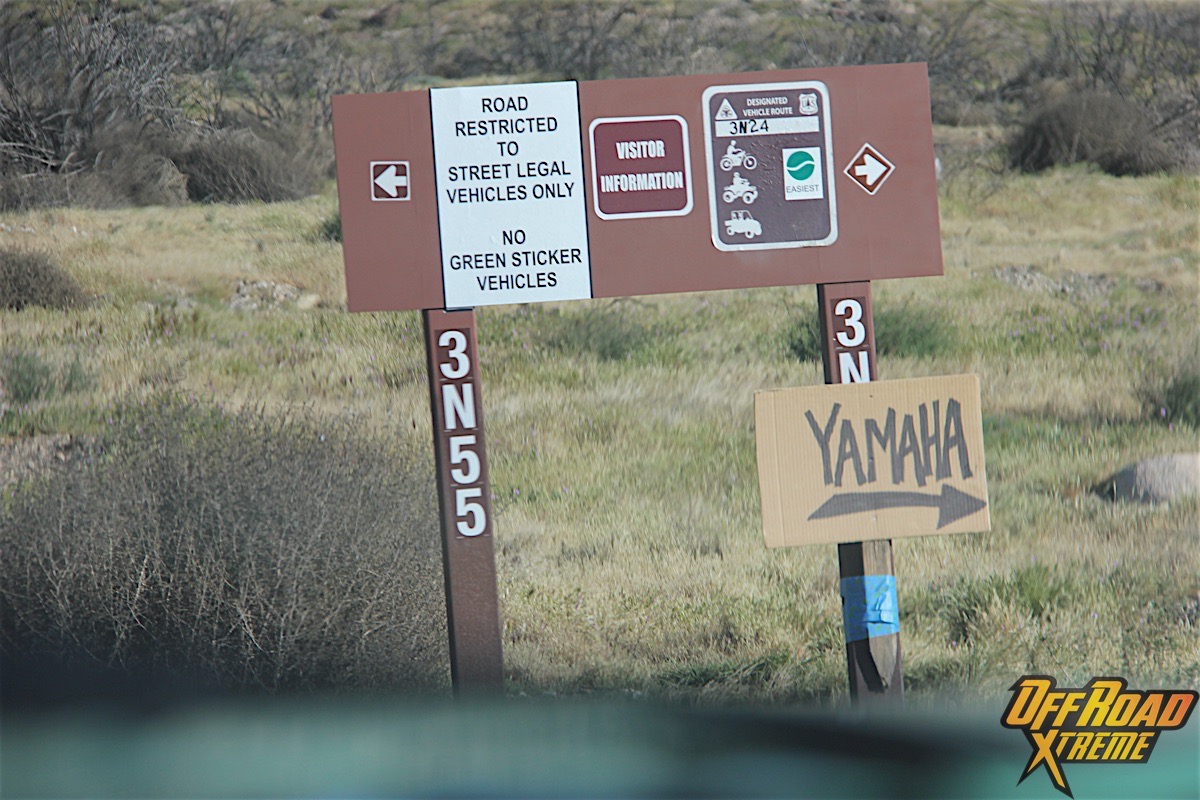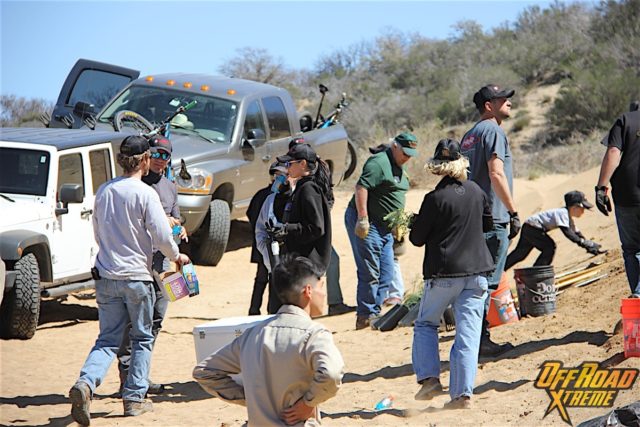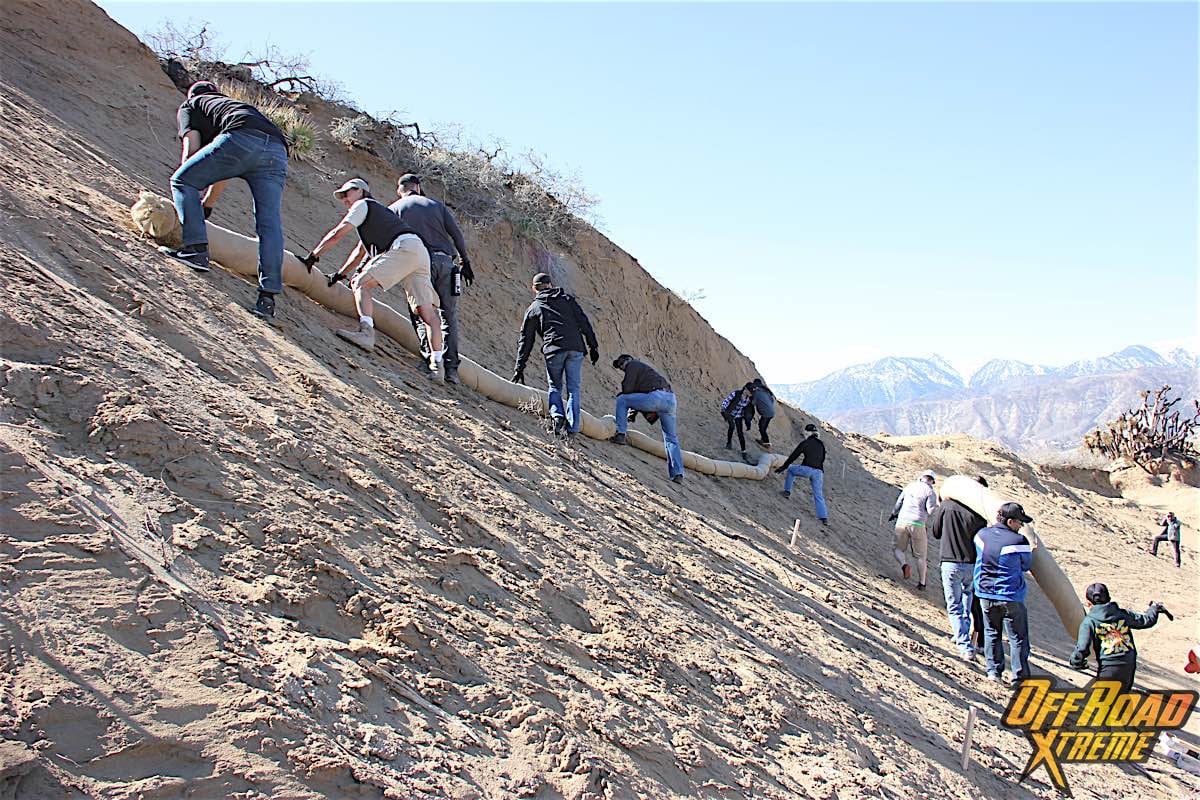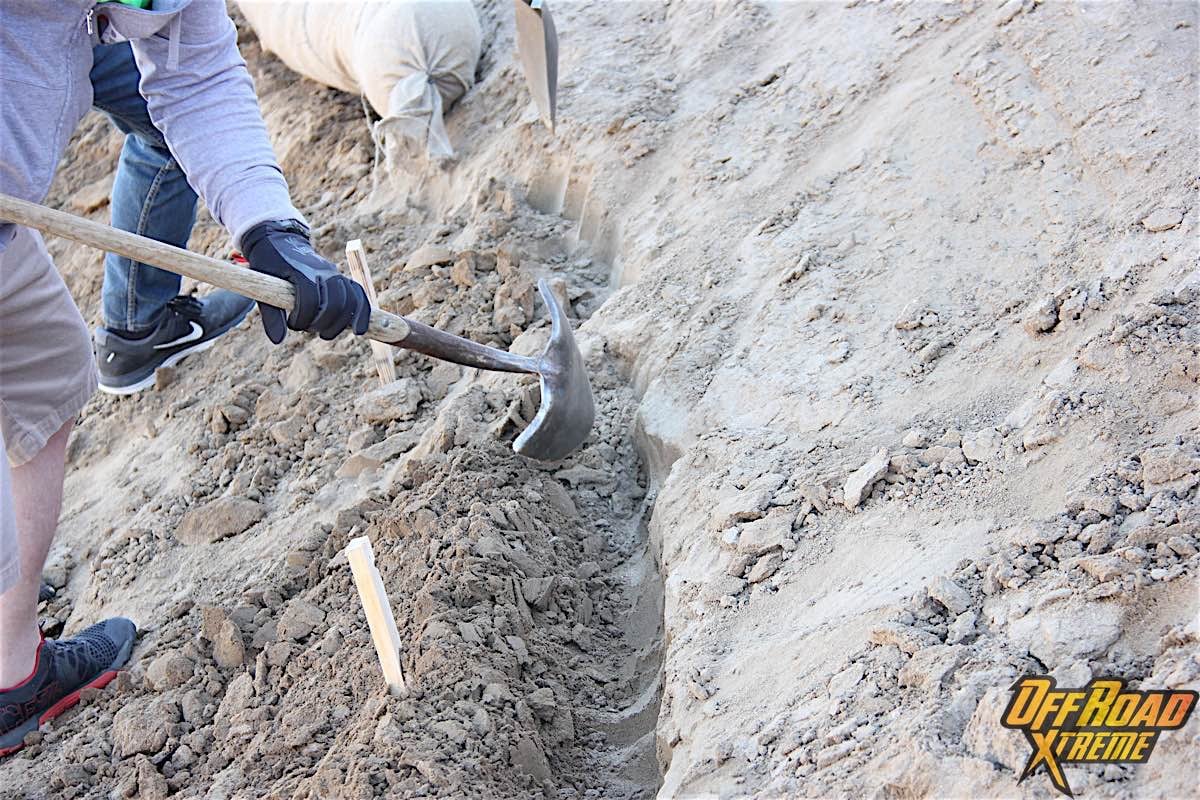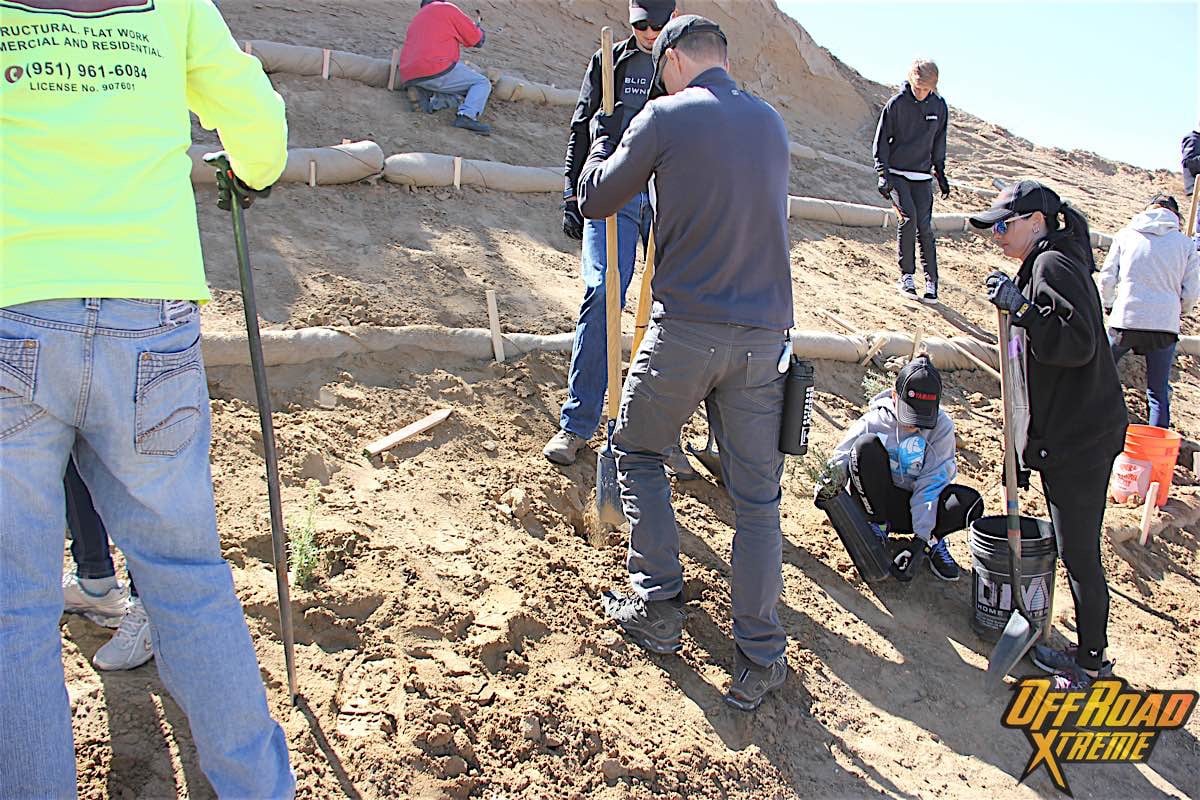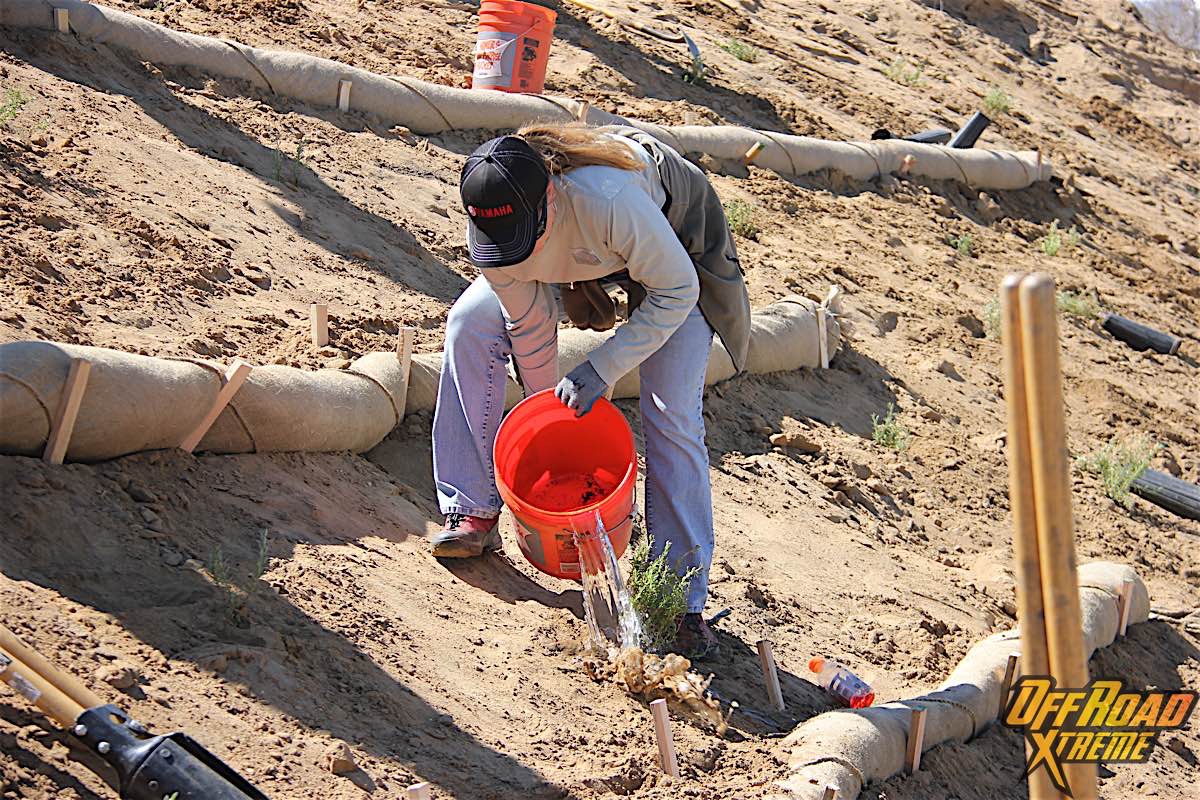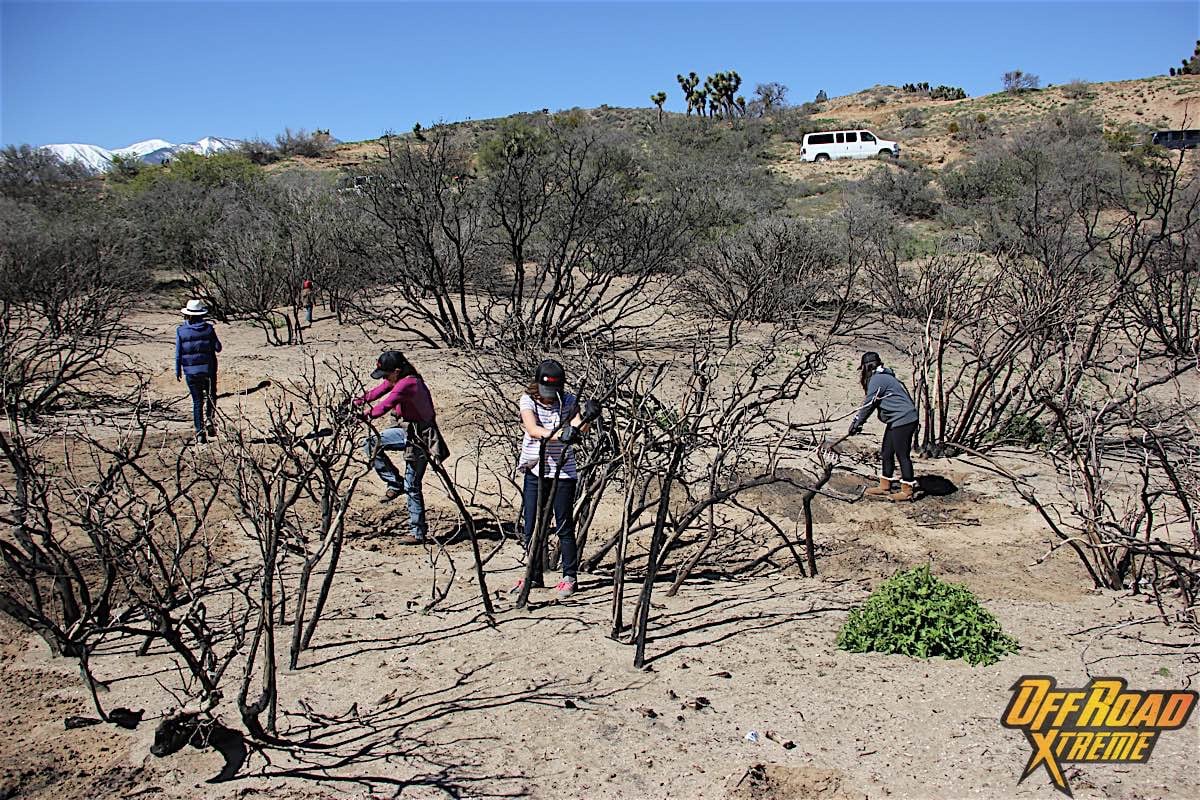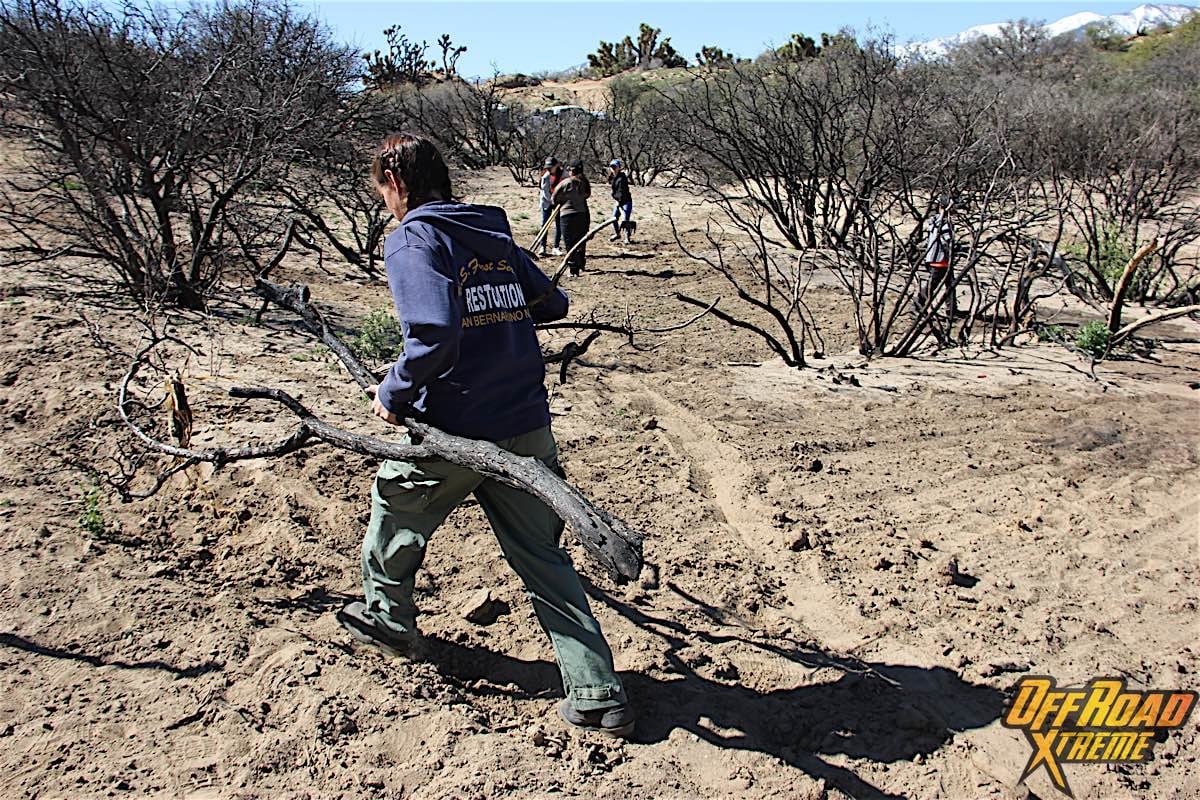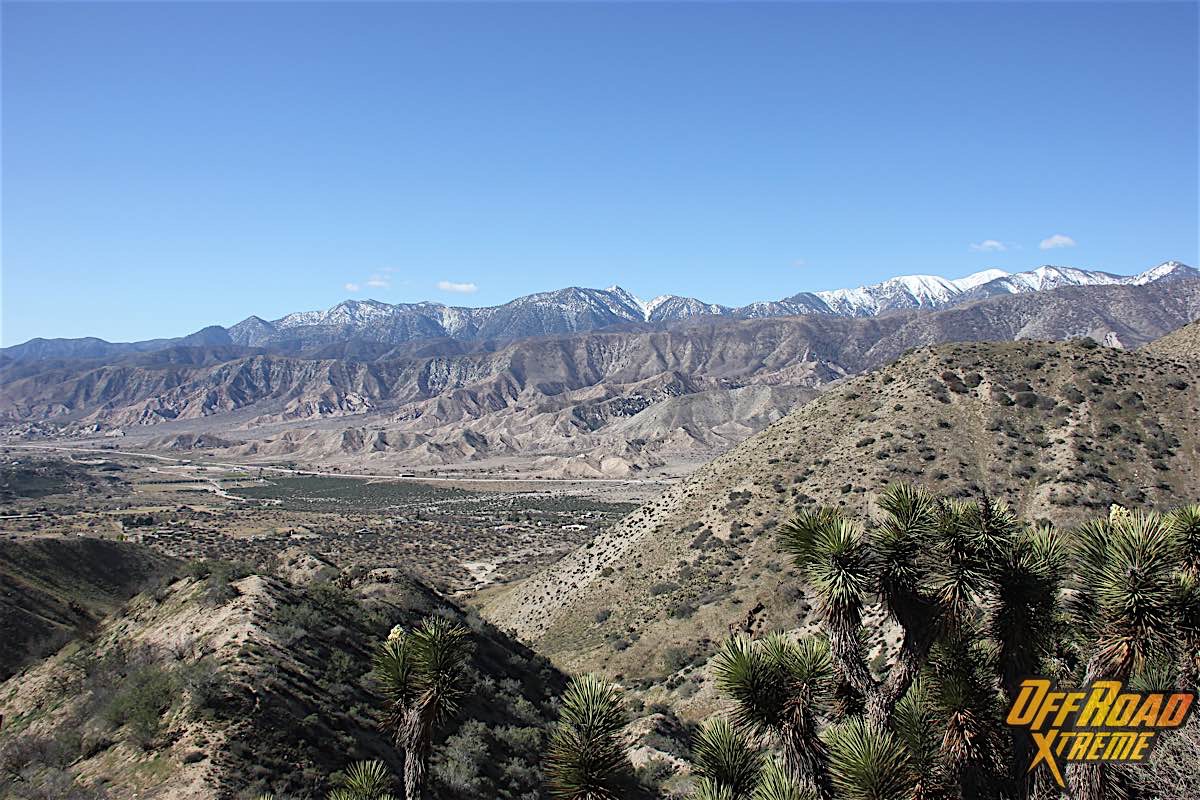Situated in Phelan, a dusty high-desert town north of San Bernardino, are trails near the Baldy Mesa OHV staging area. These trails have been closed for the better part of seven years, since a fire came through and ravaged the landscape.
But fire wasn’t the only issue. Trash, erosion, and unauthorized sub-trails splitting off from the main paths also affected the area.
Thankfully, Yamaha’s Outdoor Access Initiative [2] had a cure. The organization held its eighth annual clean-up day in early April, with Yamaha [3] employees and their families teaming up alongside Forest Service [4] volunteers to “give back” and inject new life into one of the trails.
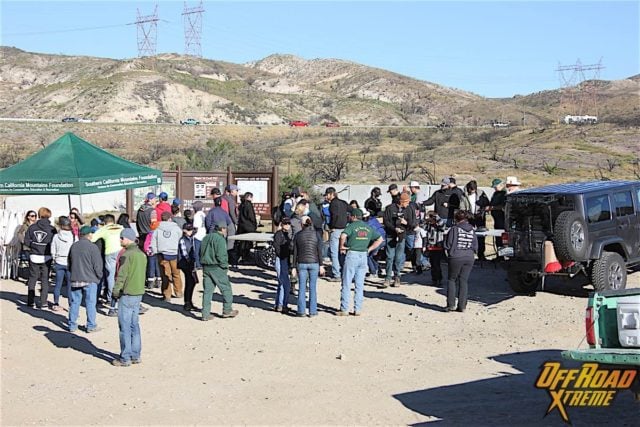 [5]
[5]The day began at 8am at the Baldy Mesa OHV Staging Area, next to the Interstate 15 freeway. Several folks had brought their families and vehicles along to help out with restoring the trail.
I pulled onto Santa Fe Road, which led to a clearing near train bridges about a mile or two away from the Interstate 15 freeway. My contact with Yamaha, Van Holmes, was there to greet me, as was Linda Stamer, a restoration site coordinator with the Southern California Mountains Foundation. After a short briefing to the 50 or so Yamaha employees and Forest Service volunteers, we all mounted up and headed out.
The drive up to the work site was fairly easy, with periodic "Yamaha" signs pointing us in the right direction.
Linda, myself, and two other passengers went up in her green Super Duty. Along the way, we got to talking about the area and what it had been through over the past few years.
“Baldy Mesa Trail was closed since the Blue Cut fire last September,” said Linda. “It burned over 30,000 acres and in some places, it lit the railroad tracks on fire.”
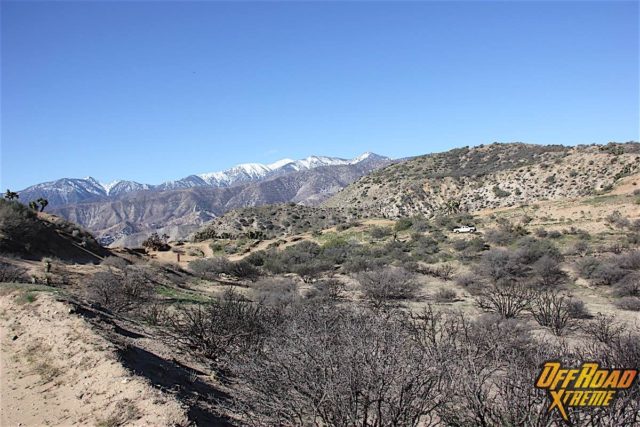 [8]
[8]Some of the damage done by the Blue Cut fire can be seen in the foreground here, with burnt scrub intermingling with resurrected plants.
There’s Work To Be Done
The objectives of cleaning up and maintaining the trail were indeed great, but the steps involved were many. After driving some five miles up the trail, we made it to the work site, which had an embankment on one side, and a plateau on the other.
Linda shared some of the specifics on the work that needed to be done. “We’re putting in some straw wattles on the embankment to keep it stable,” she said. “We’ll also be planting California buckwheat, which grows very quickly out here. We have about 400 of them for today.”
Top: Straw wattles were carried up the embankment and held in with stakes. Trenches were dug for the straw wattles to rest in. Bottom: Resilient and fast-growing California buckwheat was planted in over 400 places, acting as a natural barrier alongside the manmade barrier of straw wattles.
The plateau, meanwhile, was recently “explored” unofficially by some motorcycle riders, which Linda and the Forest Service wanted stopped. To that end, rakes would be employed to cover up tracks, with pieces of burned brush scattered around to make the area less pleasant to ride through. Hopefully, this would be enough to discourage rogue motorcyclists.
We made it to the work site after about an hour of driving up rocky switchbacks. The team posed for a quick picture, and then got to work. Pre-marked locations laid out the lines where straw wattles would need to be entrenched and staked.
This was harder than it seemed, since the embankment was somewhat steep and had very slippery dirt. It was slow going, but the team made great progress in only about two hours. By that time, all of the buckwheat had been planted and given a healthy splash of water, giving it the start it needed to thrive quickly.
On the plateau, the team was raking over motorcycle tracks and picking up burnt scrub to create a barrier along the main trail.
Over on the plateau, folks seemed to be having an easier time. They were raking over tracks and breaking off pieces of scrub, laying them out randomly. Others were taking entire burnt plants, yanking them out, and taking them back to create a natural barrier for the main trail.
All in all, the work was not only clean and efficient, but had a meaningful quality as well. By taking these measures, we all came away knowing that the Baldy Mesa trail would continue to serve the off-road community for a long time to come.
The vistas provided by Baldy Mesa Trail were very impressive.
